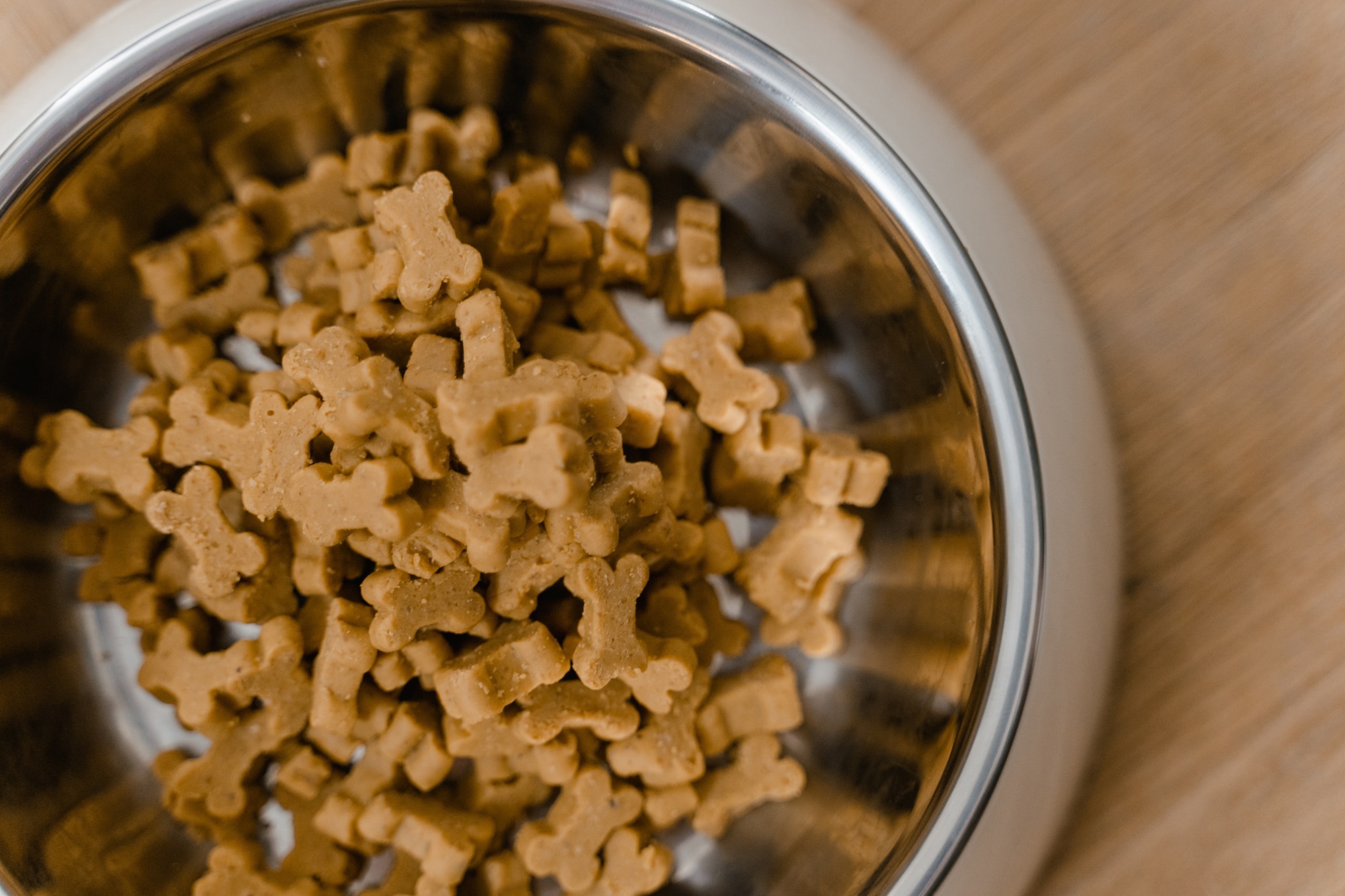Understanding What’s In Your Pet’s Food
Finding the right nutritious meal for your dog or cat is difficult. Whether you have a new kitten or puppy, or you’re looking to make a change in your cat or dog’s diet, the goal is the same – you love your pet and want to make an informed decision about what you feed them.
Deciding what is best for your pet can be overwhelming if you don’t know what to look for. This article provides insight into what you should look for on the packaging, what may be misleading, and what you should try to avoid. We’ll also discuss the benefits of wet food versus dry food and ethical considerations regarding how cat food and dog food is made.
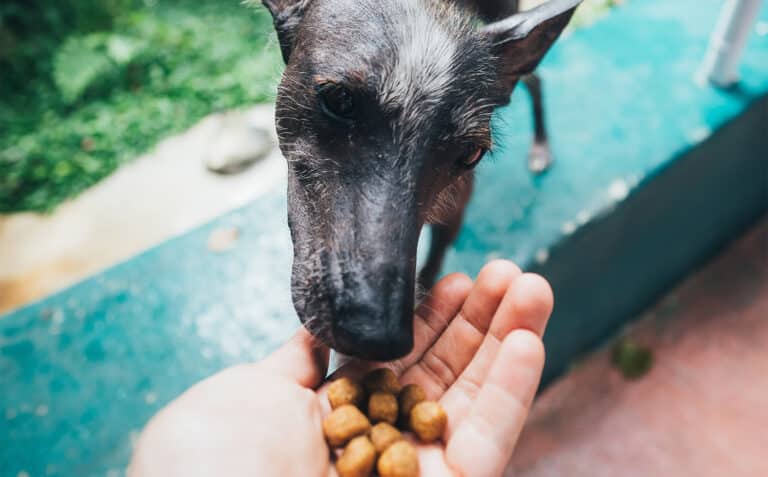
Cat and Dog Food Marketing
Walking down the food aisle can be overwhelming! Hundreds of options are readily available from a variety of pet food companies, each with large marketing teams designing vibrant packaging adorned with enticing words, keywords and phrases to lure you in.
Be skeptical of phrases like “natural” and “wholesome” printed in bold, colorful fonts on large bags. Corn syrup is a “natural” ingredient, though it is one you may want to avoid. The Food and Drug Administration requires all food sold in the United States to be wholesome, so don’t be swayed by the enticing text.
Reading Pet Food Packaging Labels
The FDA requires pet food products to contain:
- An appropriate product name
- The species of pet(s) for which the product is intended
- A quantity statement for the amount of food in the package or container
- A guaranteed analysis
- A list of all ingredients in the product
- A statement of nutritional adequacy, if required
- Feeding directions, if required
- Name and address of the manufacturer or distributor
The most important advice we can offer is reading and understanding the ingredient panels on packaging.
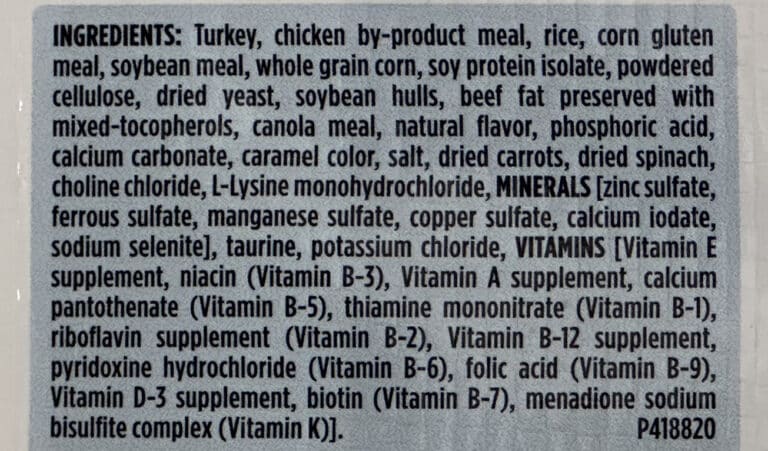
Dry vs Liquid Ingredients
Like human food, The FDA requires all ingredients in pet food to be listed in order of predominance by their weight on product packaging. Dry products are usually expressed in terms of weight or count, while fluid measurements are used for liquids.
Confusingly, the heaviest ingredients aren’t always the most nutritional. An ingredient like “beef” may include water weight, ranking it higher on the list, while a dry ingredient like “chicken meal” may be further down the list. In this case, the chicken more than likely contains more nutrition than the beef, even though the beef is listed first as the heavier ingredient.
What is Meat Meal?
Ingredients containing “meal” are the result of a cooking process that combines, grinds and dries a combination of meat, skin and bones of an animal. The meal has had the water weight extracted, which means it is a heavier ingredient and more nutrient-dense.
It is important that the meat source be identifiable like “chicken”, “turkey”, “lamb” or “rabbit”, for example. Some companies are purposely vague or misleading with the ingredients in the meals by labeling them “poultry”. A poultry meal may consist of any carcass that has feathers; this could be pigeons or other birds and not necessarily chicken or turkey.
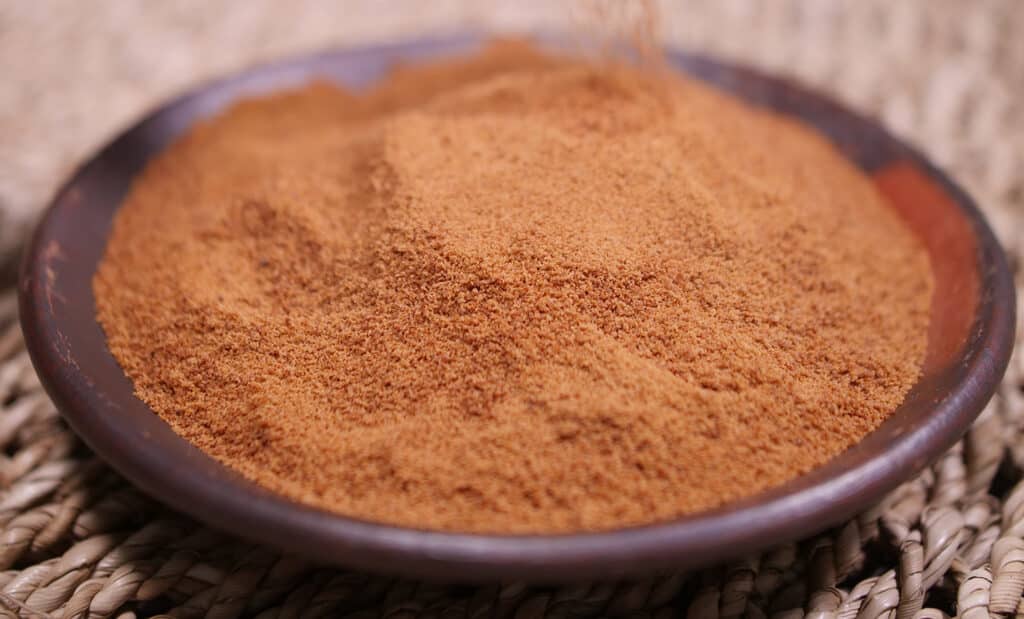
Identify Meat By-Products
You should also identify any meat by-products. By-products are parts of the animal that are not fit for consumption, such as beaks, feet or intestines. Regardless of whether the by-product is labeled vaguely like “meat” or more specifically like “chicken”, the fact remains: by-products lack nutritional value and are poor fillers in dog food.
Fillers Lacking Nutritional Value
Avoid foods with an abundance of filler ingredients. These lack nutritional value and can be used to fill holes in the ingredients panel. Corn, wheat, peanut hulls and soy are common fillers. You may not be able to avoid fillers completely, as they are often added in order to bind the kibble during the cooking process.

Natural and Chemical Preservatives
BHA/BHT are chemical preservatives that are used to preserve fats in human and pet food. While they are legal in the US, they are banned in a number of other countries due to their links to cancers and child hyperactivity.
A more natural preservative would be Vitamin C or K. They’re less effective, resulting in a shorter shelf-life (shorter expiration date). Just like human food, natural preservatives are much safer alternatives to chemical preservatives in dog and cat food.
Artificial Colors
Artificial colors (Blue 1, Red 40, Yellow 5, and Yellow 6) are also unnecessary ingredients in dog foods and cat foods. Artificial colors are used solely for appearance and provide nothing to meals other than make them visually appealing to the owners. Think about it – when was the last time your pet refused a meal because the colors weren’t appealing to them? These artificial colors are linked to hyperacidity and allergic reactions.
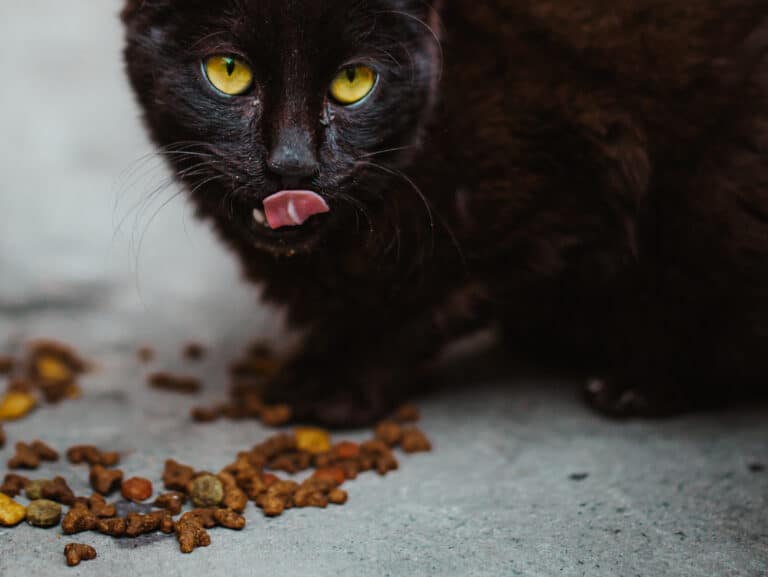
Flavor Enhancers
Rendered fat is an ingredient used to enhance the flavor of the food, but it is one of the poor quality ingredients that come from questionable sources. Rendered fat can grow mold and other harmful bacteria, such as salmonella. It may also contain high levels of toxic heavy metals. Ingredients like propylene glycol, “added flavors”, corn syrup and caramel should also be avoided when possible.

“The Salt Divide”
Ingredients that weigh less are further down the ingredient panel. We recommend investigating the ingredients listed before salt, as salt only makes up 1% or less of the ingredient weight. This is known as the “salt divide”. Anything listed after salt makes up a very small percent of the pet food.
Vitamins and Mineral Supplements
The last items listed are usually vitamins and minerals added to supplement what your dog or cat should be getting from the other ingredients. Your pet’s food should include important components to balance their dietary needs.
Vitamin B3 aids in the function of digestive enzymes.
Vitamin B1 is thiamine which helps the brain and other organs to properly function due to the metabolization of carbs, converting them into energy.
Vitamins B4 and B7 help with liver function and improve the skin and coat.
Vitamin A improves vision, immunity and bone growth.
Dry Versus Wet Food
Both wet food and dry food have their own benefits and drawbacks. Wet dog food is generally canned, while dry dog food is often in kibble form.
Dry Food Benefits:
- Generally less expensive with longer shelf-life
- Easier to integrate with dog food puzzles, wobbly food dispensers or slow-eating bowls
- Can be left out longer – great for pets who prefer to graze and eat food throughout the day
- Chewing dry kibbles helps prevent tartar buildup
Wet Food Benefits:
- More hydrating – higher moisture content, great for pets with urinary or kidney disease.
- More aromatic and flavorful – great for enticing a sick dog or cat with poor appetite.
- Keeps pets feeling full longer – great for pets who have intense appetites or need to lose weight.
- Easier to chew – great for pets with dental issues
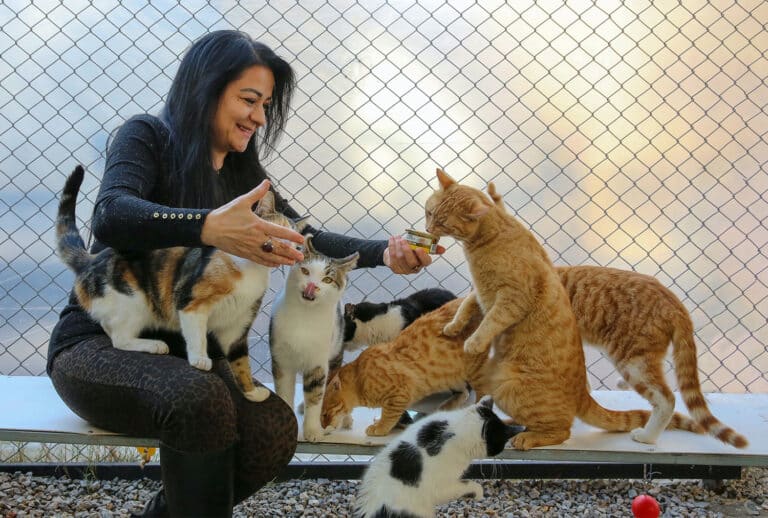
Sustainable and Ethical Pet Food Considerations
In addition to considering a product’s nutritional value, you may choose to purchase products from companies based on their ethics. Does the packaging indicate the animals utilized to make the food were humanely raised and sourced? Much of the meat in cat and dog food is factory farmed and not free-range, so this may be something to investigate if you’re concerned about ethical food options.
Is the company utilizing sustainable practices? Dog food brands considered vegan and organic are generally considered more sustainable than those creating meat-based food, for example. Fishing is often extremely unsustainable; “MSC certified” is a good indicator that the dog food company is avoiding environmental damage to marine ecosystems when sourcing fish.
Unfortunately, sustainable and ethical practices often come with a price tag. It’s generally more efficient and profitable for companies to utilize less sustainable methods, and they generally result in less expensive products with longer shelf-lives. If ethics are important to you when selecting food for your dog or cat, you may want to perform some research about different brands and their practices.
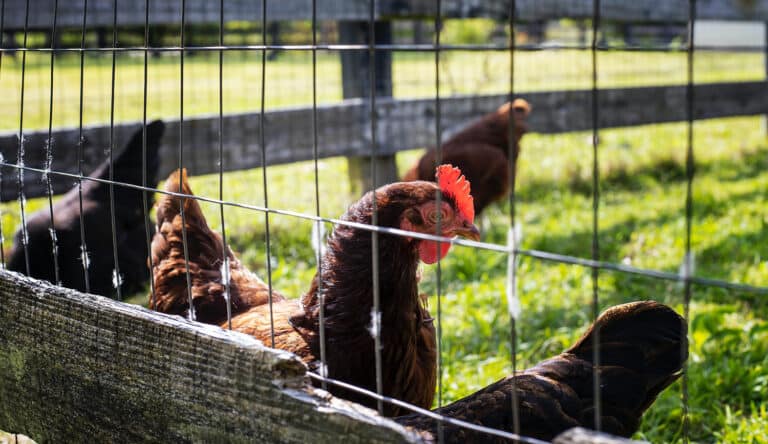
Making Informed Decisions for Your Pet
When selecting the right food for your four-legged friend, it is important to be as informed and educated as possible. Much like human food, your pet’s food should contain significant nutritional value and fulfill their bodily needs. Smoochie Pooch recommends consulting your veterinarian to discuss your pet’s diet and calorie requirements if you’re questioning whether or not their needs are being fulfilled.
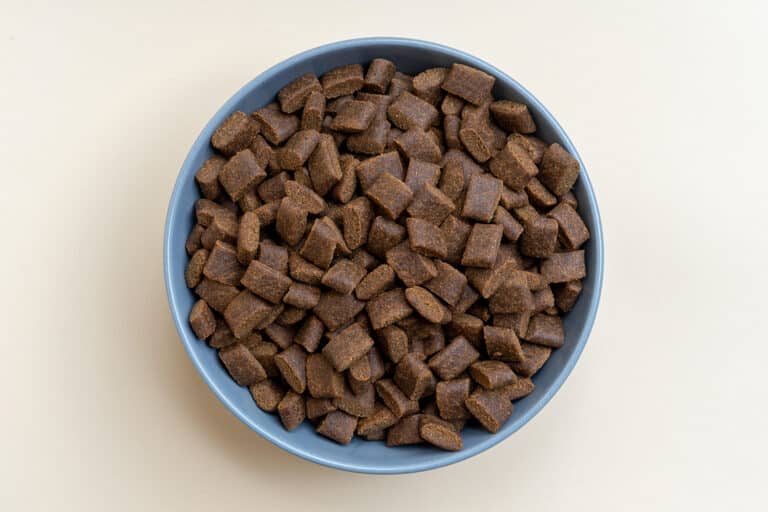
Enjoy this blog by Smoochie Pooch Dog Grooming? Read more informational articles written by Smoochie Pooch Professional Dog Groomers.


